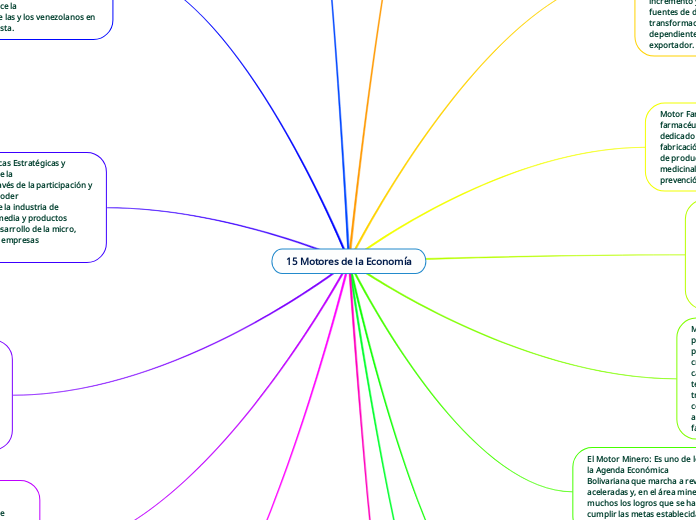Ley General del turismo Política y Planeación de la Actividad Turística
Marine life, sea life or ocean life, is represented by the plants, animals and other organisms that live in the saltwater of the sea or ocean, or the brackish water of coastal estuaries.
At a fundamental level, marine life affects the nature of the planet. Marine organisms produce oxygen and sequester carbon.
Articulo 20. Información para la elaboración y actualización del inventario nacional de recursos turísticos.
Fish are limbless cold-blooded vertebrate animal with gills and fins living wholly in water.
MICETUR encardado de diseñar, organizar y actualizar el sistema de información
Rays are the largest group of cartilaginous fishes, with well over 600 species in 26 families.
Rays look like bats in the water, and this is probably why they are called batoids. Rays use their pectoral fins to 'fly' through the water. Though a bony fish takes in water with its mouth, rays do not because they live at the bottom of the ocean.
Name a few of the most known species.
Articulo 19. Manual para la elaboración y actualización de los inventarios de recursos.
Marine invertebrates lack a vertebral column, and some have evolved a shell or a hard exoskeleton. Some of them can collect bacterias or even absorb harmful components. For instance, sea sponges are able to take in the excess amount of ammonium in the ocean water.
They have more than 10,000 species, name a few that are the most common.
Debe contar con la metodología para los procesos, es aprobado por resolución ministerial del MINCETUR.
Articulo 18 Coordinaciones destinadas a la formulación de los lineamientos para la elaboración y actualización de los inventarios de recursos turísticos
Marine plants consist of two major types, the seagrasses, and the algae and seaweeds.
Seagrasses represent members of some of the more complex plants, while algae and seaweeds display simple forms and are often microscopic.
Gather information about marine plants:
- What do marine plants need to survive?
- What is the importance of marine algae?
- How long do aquatic plants live?
Se realiza con las entidades publicas y privadas vinculadas a la actividad turística
Articulo 23 Proyectos de inversión turística
El proceso de priorización de inversiones, planeamiento y ejecución se realiza con cargo al FONDO de Promoción Turística.
Articulo 22 Publicaciones de los inventarios de recursos Turísticos
Realizado por el MINCETUR en su portales institucionales
Articulo 21 Inventario regional de recursos turísticos
Elaborado por los gobiernos regionales la MML
Articulo 25 Procedimiento para la declaración de las zonas de desarrollo turístico prioritario
El bicentenario del turismo y/o SERNANP están facultados para requerí información adicional
El MICETUR y el Ministerio del Ambiente emitirán la opinión técnica dentro del plazo de 90 días
Documentos deben ser remitidos por el gobierno regional al MINCETUR y al MINAM a través del SERNANP
Articulo 24 Requisitos para la declaración de zonas de desarrollo turístico prioritario de alcance regional
Inventario regional de Recursos Turísticos
Plan de desarrollo turístico de la ZDTP
Plano de delimitación
Informe técnico
Articulo 17 Cuenta satélite de turismo
A coral reef is an underwater ecosystem characterized by reef-building corals. Reefs are formed of colonies of coral polyps held together by calcium carbonate. Most coral reefs are built from stony corals, whose polyps cluster in groups.
The 3 main types of reef are: atoll, barrier reefs, fringing reefs.
Write down their characteristics as well as the importance of the reefs
Se actualiza mediante los indicadores del SIT
Coral reefs are important for many different reasons aside from supposedly containing the most diverse ecosystems on the planet.
Debe ser utilizada cada vez que el instituto nacional de estadística e informática realice el cambio de año
- Where are fringing reefs found?
- How is it formed?
- What animals live in fringing reefs?
Articulo 16 Sistema de información turística
Marine mammals are aquatic mammals that rely on the ocean and other marine ecosystems for their existence.
They include animals such as seals, whales, manatees, sea otters, and polar bears. They are an informal group, unified only by their reliance on marine environments for feeding.
Debe cumplir con los requerimientos de información en el sistema de información Turística
- Do they live in water all the time?
- How dense is sea otters' fur?
- What do sea otters eat?
- What is a group of otters called?
Incorpora información y/ o datos estadísticos
- How big are dolphins?
- What do dolphins eat?
- How are dolphins different from fish?
- Where do dolphins live?
Articulo 15 Elaboración y actualización , evaluación y monitoreo del PENTUR.
Seabirds are birds that are adapted to life within the marine environment. While seabirds vary greatly in lifestyle, behavior, and physiology, they often exhibit striking convergent evolution, as the same environmental problems and feeding niches have resulted in similar adaptations.
Name a few of bird species who live at sea or at the seaside:
Contendrá la metodología que se empleará para que sus propuestas sean de conocimiento de los gobiernos regionales y locales
Articulo 14 Aprobación y actualización del plan estratégico nacional de turismo
Currently, of the approximately 12,000 extant reptile species and subspecies, only about 100 are classed as marine reptiles: extant marine reptiles include marine iguanas, sea snakes, sea turtles and saltwater crocodiles.
Debe ser utilizada cada 5 años desde la aprobación o última actualización.
The marine iguana, also known as the sea iguana is a species of iguana found only on the Galápagos Islands that has the ability, unique among modern lizards, to forage in the sea, making it a marine reptile.
Add important facts about marine iguanas. For e.g. how long can a marine iguana stay underwater or how long do they live, etc.









